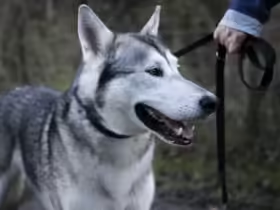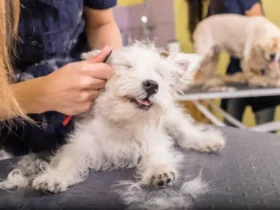Caring for Your Dog’s Paw Pads: A Complete Guide
A dog’s paws do much more than just help them walk—they provide essential protection and traction for daily activities. Your dog’s paw pads act as cushions, shielding their feet from rough terrain, hot surfaces, and sharp objects. Because paw pads are essential to your dog’s health and comfort, it’s important to provide proper care and attention.
In this guide, we’ll discuss everything you need to know about caring for your dog’s paw pads, including common issues, maintenance tips, and how to treat injuries.
Why Paw Pad Care is Essential for Dogs
Your dog’s paw pads are made of tough, thick skin that helps protect their feet from injury. However, despite being resilient, paw pads can still become dry, cracked, or injured if not properly cared for. Here are some key reasons why paw pad care is important:
- Preventing Injury: By regularly inspecting and caring for your dog’s paw pads, you can catch small issues before they become larger problems, such as cuts, burns, or infections.
- Maintaining Comfort: Healthy paw pads provide the cushioning needed for your dog to walk, run, and play comfortably. Damaged or dry pads can cause pain, discomfort, and limping.
- Enhancing Mobility: When a dog’s paw pads are in good condition, they can walk more easily on a variety of surfaces, from gravel and asphalt to slippery indoor floors.
Common Issues with Paw Pads
Paw pads are tough, but they can still experience wear and tear. Here are some of the most common paw pad problems that pet owners should watch out for:
1. Dry or Cracked Paw Pads
Just like human skin, a dog’s paw pads can become dry and cracked if they’re exposed to rough surfaces, extreme temperatures, or lack of moisture. Cracked paw pads can be painful and increase the risk of infections.
Causes of Dry or Cracked Pads:
- Walking on hot pavement or rough terrain
- Exposure to cold, dry air or snow
- Over-washing the paws with harsh shampoos
- Lack of proper moisturizing care
2. Burns from Hot Surfaces
In hot weather, surfaces like asphalt, concrete, or sand can become dangerously hot and cause burns to your dog’s paw pads. Since dogs don’t wear shoes, they rely on their pads to protect them from these extreme conditions.
Signs of Burned Pads:
- Limping or reluctance to walk
- Blisters or peeling skin on the paw pads
- Red, raw, or tender paw pads
3. Cuts or Scrapes
Sharp objects like broken glass, rocks, or thorns can cause cuts or scrapes on your dog’s paw pads. While minor cuts can heal on their own, deep cuts may require medical attention.
How to Spot Injuries:
- Your dog may limp or hold their paw up
- You may notice bleeding or an open wound
- The area may be swollen or red
4. Paw Pad Infections
Infections can occur if a paw pad injury is left untreated or if bacteria enter a cut or scrape. Infections may also arise from excessive licking of the paws, often due to allergies or irritation.
Signs of Infection:
- Swelling and redness around the pad
- Discharge or pus
- Foul odor
- Your dog frequently licking or biting the area
How to Care for Your Dog’s Paw Pads
Regular paw pad care can prevent many of the issues mentioned above and keep your dog’s paws healthy and pain-free. Here’s how to take care of your dog’s paw pads effectively:
1. Regular Paw Inspections
Make it a habit to inspect your dog’s paw pads regularly, especially after walks or outdoor play. Look for any cuts, cracks, foreign objects, or signs of infection. Checking your dog’s paws regularly helps you catch any issues early.
2. Keep Paws Clean and Moisturized
Clean your dog’s paws after walks, especially if they’ve been walking on rough or dirty surfaces. Use a damp cloth to wipe away dirt and debris from the pads and between the toes.
To prevent dryness, apply a pet-safe paw balm or moisturizer regularly. Look for products made specifically for dogs, as human lotions can contain ingredients harmful to pets. The moisturizer will keep your dog’s pads soft and prevent cracking.
3. Protect Paw Pads from Harsh Weather
Both hot and cold weather can be hard on your dog’s paw pads. Here’s how to protect their paws in different conditions:
- Hot Weather: Avoid walking your dog on hot pavement or asphalt during the heat of the day. If you can’t hold your hand on the ground for more than a few seconds, it’s too hot for your dog’s paws. Walk on grass or dirt, or consider dog booties for added protection.
- Cold Weather: In the winter, ice and snow can cause your dog’s paws to dry out and crack. Salt and de-icing chemicals used on sidewalks can also irritate their paws. After walks, rinse your dog’s paws with warm water to remove salt, and apply a paw balm to prevent dryness.
4. Trim the Hair Between the Pads
Dogs with long fur can develop mats between their paw pads, which can cause discomfort and collect dirt. Regularly trim the hair between your dog’s pads to prevent matting and keep their paws clean. Use blunt-end scissors or clippers for a safe trim.
5. Trim Your Dog’s Nails
Long nails can affect your dog’s gait and put extra pressure on the paw pads, causing discomfort. Regularly trim your dog’s nails to prevent overgrowth. Be careful not to cut the quick (the sensitive part of the nail with blood vessels) to avoid bleeding.
6. Use Booties for Extra Protection
If your dog frequently walks on rough terrain, hot surfaces, or during extreme weather conditions, consider using dog booties. Booties provide a protective barrier between your dog’s paw pads and the ground, preventing injury and irritation.
Treating Paw Pad Injuries
Even with the best care, accidents can happen. If your dog suffers from a paw pad injury, it’s important to treat it promptly to avoid complications. Here’s how to handle common paw pad injuries:
1. Treating Minor Cuts or Scrapes
For small cuts or scrapes, clean the area with warm water and mild soap. Apply an antiseptic solution to disinfect the wound, then cover it with a bandage or wrap if necessary. Monitor the injury for signs of infection, such as swelling, redness, or discharge. If the cut doesn’t heal or worsens, consult your veterinarian.
2. Treating Burns
If your dog’s paw pads are burned from walking on hot surfaces, immediately move them to a cooler area and soak their paws in cool water (not ice-cold) for several minutes. Avoid letting your dog lick their paws, as this can introduce bacteria to the area. Apply a soothing, pet-safe paw balm to promote healing, and contact your vet if the burns are severe.
3. Treating Cracked or Dry Pads
For dry or cracked pads, apply a paw balm or moisturizer to help soothe and heal the skin. Keep your dog off rough or hot surfaces until the pads have healed. Regular moisturizing can help prevent future cracks.
4. Treating Infections
If you suspect your dog’s paw pad is infected, it’s best to consult your veterinarian. They may prescribe antibiotics or recommend a medicated solution to treat the infection. Keep the paw clean and prevent your dog from licking the area to promote healing.
When to Seek Veterinary Care
While many paw pad issues can be treated at home, there are times when professional veterinary care is necessary. Contact your veterinarian if:
- Your dog has a deep cut or severe burn on their paw pads.
- You notice signs of infection, such as swelling, discharge, or foul odor.
- Your dog is limping, refusing to walk, or appears to be in pain.
- A paw pad injury isn’t healing or is getting worse despite home treatment.
Conclusion: Keep Your Dog’s Paw Pads Healthy
Caring for your dog’s paw pads is essential for their overall well-being and comfort. By inspecting their paws regularly, keeping them clean and moisturized, and protecting them from harsh weather, you can ensure your dog stays happy, healthy, and pain-free. In case of injuries, knowing how to treat minor issues at home and when to seek veterinary care can make a big difference in your dog’s paw health.
With regular care and attention, your dog’s paws will stay strong and resilient, allowing them to enjoy all their favorite activities with ease.











Leave a Reply